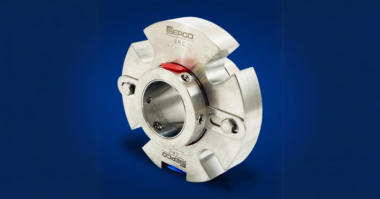Authors: John Conway and Jack Creamer, Schneider Electric
This is Part 5 of a series. Read Part 4.
Technological elements leading the IIoT evolution
IIoT is blurring the boundaries between physical and virtual objects. This is giving way to more flexible models of accessing process and machine data – bypassing rigid automation architectures and accessing user-friendly, mobile systems based on Internet standards. While generating and collecting data is an important aspect of IIoT, this alone will not enable manufacturers to realize the full benefit of IIoT –there are other components to consider:
- Smart connected devices that are IIoT ready will deliver an “advanced sensing system” that generates information with the first level of data analysis completed by the device itself
- An edge gateway to aggregate data, display information and connect to the cloud for advanced analytics
- Applications and services to further analyze data and put it into context to help reach business goals
- An open and collaborative environment to allow partners to develop on a common platform
Delivering smart connected devices that are IIoT ready means embedding Internet technologies like WIFI and web services natively into those devices. For example, Variable Speed Drives are essential to industrial processes by way of providing information on motor use and other devices like sensors and relays provide information on the device lifecycle. Embedded digital services also become critical to support process optimization. For example the new series of Altivar Process drives with built in web technology standards, Ethernet connectivity, intelligence and asset management or energy management features deliver additional contextual information, including real time events, alarms, drifts, and historical data.
An edge gateway will aggregate data collected from various sources and deliver real-time business information to the right people at the right time. This is the key interface between the Internet world and the process (the things). It also facilitates value-added services independent of the control system. Supporting this vision is the new Magelis GTU HMI which offers the flexibility of combining a CPU box with a choice of display, including a Wireless LAN enabled display. The edge gateway ensures a high level of performance and connectivity to address the critical needs of the IIoT platform.
Digital applications and services are critical to end users achieving the business performance gains promised by IIoT. Simple data collection must be extended to include analytics that deliver pertinent and valuable business information. Some examples of such applications and services include installation optimization, asset management and protection, condition based monitoring, augmented reality applications and OEE calculation, among others.
A platform built on an open and collaborative environment will allow selected partners to develop specific applications that extend offerings and reach to help deliver the promise of IIoT. A consistent development environment with governance and processes will enable easy integration of IIoT platforms.
Read Part 6: Measurement and the art of “simply-complex” (coming next week!)
About the Authors:
John Conway is Schneider Electric’s VP for Strategy & Partnerships. In this capacity, he is responsible for strategic intelligence, strategic planning and merger & acquisition activities for the Industry Business Unit. During his 17 years with the company, he has held a variety of roles, starting out as director of microelectronics key accounts. He then moved into the creation and deployment of automation solution centers in Asia and Eastern Europe before running the Advanced Services and Mergers & Acquisitions activities for Industry. Prior to joining Schneider Electric, John held sales and engineering management positions within the automation divisions of Siemens and Texas Instruments. John has a Bachelor of Science in Mechanical Engineering and a Master of Science in the Design of Machine Systems. He is currently based at Schneider Electric’s Horizon office in Carros, France.
Jack Creamer is Schneider Electric Segment Marketing Manager – Pumping Equipment, based in the United States. Mr. Creamer has more than 30 years in the Electrical Industry, and has been involved for 10 years in the Pumping Industry. He is involved in key industry organizations such as the Hydraulic Institute and Submersible Wastewater Pump Association, where he holds both Committee Chair and Board level positions. In his time in the Pump industry, he has help Schneider create numerous solutions that both enhance pumping efficiency and address issues such as maintenance and downtime.





Comments